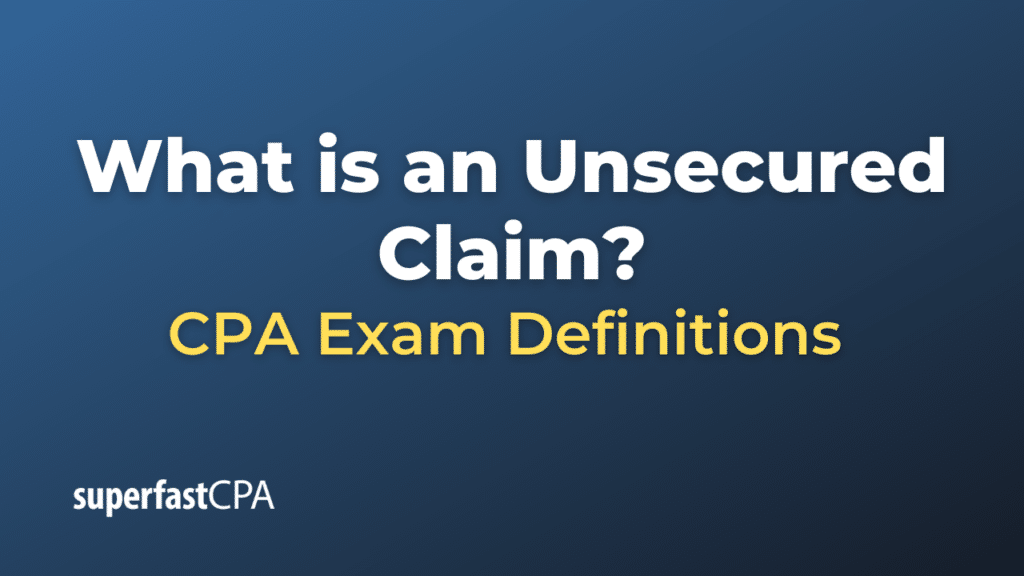Unsecured Claim
An unsecured claim is a type of obligation or debt for which the creditor does not have the benefit of any collateral or security interest. In other words, the creditor does not have a lien on any specific asset of the debtor. Unsecured claims are generally less secure than secured claims, meaning they carry a higher risk of non-payment in case of default.
In a bankruptcy proceeding, unsecured claims are usually given lower priority than secured claims. Once the secured creditors are paid from the proceeds of the liquidation of secured assets, any remaining funds are used to pay off unsecured creditors. Often, unsecured creditors receive only a fraction of the amount they are owed, if they receive anything at all.
Common examples of unsecured claims include:
- Credit card debts
- Medical bills
- Utility bills
- Some types of personal loans
- Trade credits (e.g., amounts owed to suppliers)
- Legal judgments not tied to specific property
By contrast, secured claims are those for which the creditor has a lien or some other security interest in a specific asset, like a mortgage on a house or a car loan secured by the vehicle itself. If the debtor defaults, the secured creditor has the legal right to seize and sell the collateral to satisfy the debt.
Note that there are also various types of priority among unsecured claims, usually specified by bankruptcy law. For example, in the United States, certain tax obligations and employee wages may be considered “priority unsecured claims,” meaning they will be paid before other general unsecured claims.
Example of an Unsecured Claim
Let’s consider a simplified example involving a small business declaring bankruptcy. Suppose “ABC Widgets Inc.” is a small manufacturing company that has fallen on hard times and has decided to file for Chapter 7 bankruptcy. The company has the following debts:
- Bank Loan (secured by company machinery) – $50,000
- Supplier Bills (unsecured) – $20,000
- Credit Card Debt (unsecured) – $10,000
- Employee Wages (priority unsecured) – $15,000
The assets of the company are sold, and let’s say the liquidation process generates $60,000.
Here’s how the money would typically be distributed:
- Secured Claim: The bank loan of $50,000 would be the first to be paid off. This is a secured claim because it is backed by the company’s machinery. The bank gets the full $50,000.
- Remaining Funds: $60,000 – $50,000 = $10,000
- Priority Unsecured Claim: Next, the employee wages, which are priority unsecured claims, would be paid. Let’s assume that the full $15,000 in wages are considered priority. In this case, however, there are only $10,000 remaining, so the employees would divide this among themselves.
- Remaining Funds: $10,000 – $10,000 = $0
- General Unsecured Claims: The suppliers and the credit card company are left with unsecured claims, but there is no money left to pay them. In this example, they would get nothing.
In this simplified example, you can see that:
- The secured creditor (the bank) is paid first and in full.
- Priority unsecured claims (employee wages) are paid next but only receive partial payment.
- General unsecured claims (suppliers and credit card company) are left unpaid.
This demonstrates the inherent risk in being an unsecured creditor; in cases of bankruptcy, there’s a significant risk of receiving little to no repayment.













